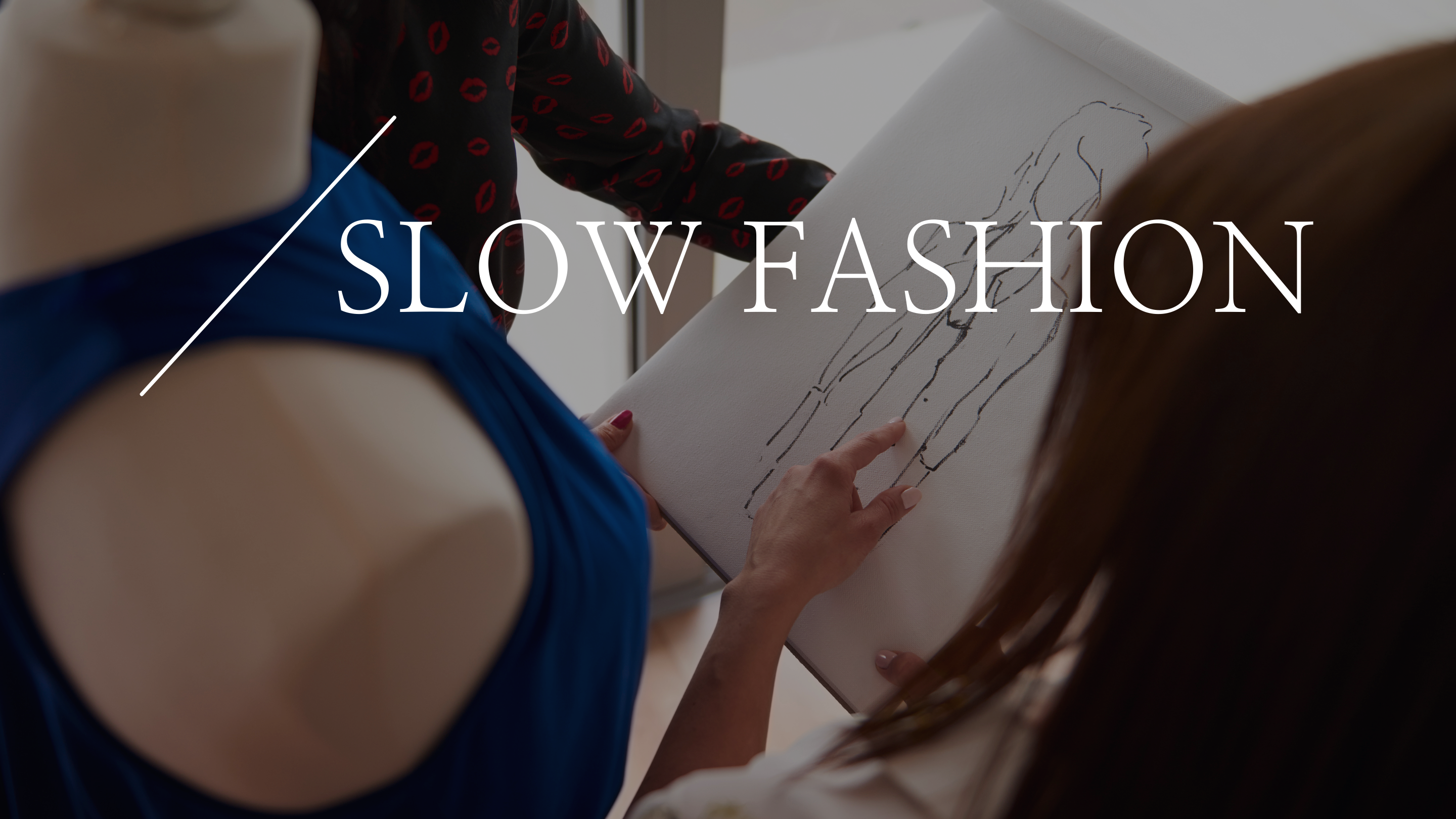Au cours des 20 dernières années, l’essor de la fast fashion a rendu l’achat de nouveaux vêtements moins cher, plus rapide et plus accessible. Malheureusement, elle a également appris aux consommateurs à considérer les vêtements comme des produits jetables. Selon l’indice de transparence de la mode 2019, l’industrie mondiale de l’habillement et de la chaussure est responsable de 8 % des émissions mondiales de carbone. Les entreprises de fast fashion émettent presque autant de gaz à effet de serre que l’ensemble de l’Europe, et bien plus que toutes les compagnies aériennes et maritimes internationales réunies. Ces statistiques nous montrent que le secteur de la fast fashion a non seulement un impact significatif sur l’environnement, mais exploite également ses travailleurs pour produire ces vêtements bon marché et jetables.
Les célébrités et les personnalités des réseaux sociaux sur des plateformes telles qu’Instagram et TikTok influencent les jeunes hommes et femmes. Ils continuent d’acheter toujours plus de vêtements, pour ne les porter que quelques fois, car ils vieillissent vite. La croissance de la fast fashion a créé ce besoin extrême de variété et a créé une culture du « plus c’est mieux ». Ces marques de fast fashion ont donné aux consommateurs le sentiment qu’ils portent du luxe sans en payer le prix fort. Malheureusement, la fast fashion favorise une culture de la gratification instantanée et une mentalité de consommation irréfléchie.

Qu'est-ce que la slow fashion ?
La slow fashion est l'exact opposé. Il s'agit de développer des collections réfléchies et soignées de vêtements, chaussures et accessoires de haute qualité, plutôt que de produire en masse des articles saisonniers et tendance. La slow fashion encourage les clients à être plus réfléchis et attentifs dans leurs achats de vêtements et à sélectionner des pièces pour leur garde-robe qui dureront longtemps, voire toute une vie.
L'essai de Kate Fletcher paru dans The Ecologist en 2007 a lancé le mouvement de la slow fashion dans la conscience publique. Il encourage les consommateurs, les créateurs de mode, les entreprises et les détaillants à assumer une plus grande responsabilité environnementale.
« La slow fashion consiste à concevoir, produire, consommer et vivre mieux. La slow fashion n'est pas basée sur le temps mais sur la qualité (qui a des composantes temporelles). Slow n'est pas l'opposé de fast - il n'y a pas de dualisme - mais une approche différente dans laquelle les créateurs, les acheteurs, les détaillants et les consommateurs sont plus conscients de l'impact des produits sur les travailleurs, les communautés et les écosystèmes. »
L’essor de la slow fashion ces dernières années suggère un changement de comportement des consommateurs et une réponse positive des principaux acteurs des industries du textile et de l’habillement.
« Le Covid-19 nous a poussés à ne plus parler de changement, nous n’avons plus le luxe de nous plaindre de systèmes obsolètes sans rien faire pour y remédier. [...] Les défilés de mode sont un dinosaure. »
Simon Ungless, directeur exécutif de l'École de mode de l'Académie des Beaux-Arts de l'Université
La slow fashion est une méthode de confection de vêtements qui prend en compte tous les éléments de la chaîne d'approvisionnement. Elle s'efforce de respecter les personnes, l'environnement et les animaux. Elle implique également de consacrer plus de temps au processus de conception, en veillant à ce que chaque pièce soit de haute qualité. Les partisans de la slow fashion recherchent des tissus respectueux de l'environnement, comme le coton et le lin, ainsi que des silhouettes intemporelles qui survivent aux cycles de tendance. La slow fashion encourage également le recyclage des vêtements non utilisés en nouvelles pièces.
Il n’a jamais été aussi important de réinventer le secteur de la mode en innovant et en repensant les nouvelles technologies qui favorisent les pratiques durables. C’est exactement ce que fait ce mouvement de slow fashion.

Qu'est-ce qui distingue une marque de slow fashion ?
Une marque qui incarne le modèle de la slow fashion aura les caractéristiques suivantes :
- La slow fashion privilégie la qualité à la quantité. Par conséquent, une marque aura probablement moins d'articles disponibles et créera des pièces fabriquées à partir de matériaux durables et de haute qualité.
- Les marques privilégieront les matières durables et durables, alors attendez-vous à voir des vêtements en lin, en coton biologique et en laine.
- La slow fashion fabrique des vêtements durables en petites quantités pour réduire les déchets, ou peut même fonctionner sur commande pour éviter de produire des tenues excédentaires.
- Les vêtements sont plus intemporels que tendance.
- D'origine et de production locale.
- Peu de styles distincts par collection, ou une collection permanente sans saison.
La différence entre la mode lente et la mode durable
La slow fashion consiste à consacrer du temps et des efforts à la création d'articles de haute qualité qui dureront plus d'une saison. C'est un style de mode qui prend plus de temps à se développer. La mode durable définit la production de vêtements qui ne nuisent pas à l'environnement. Les vêtements durables nécessitent moins d'eau, de terre et d'énergie pour être produits, tout en réduisant les déchets et les contaminants.
La mode lente et la mode durable peuvent diverger, mais elles partagent des préoccupations similaires :
Émissions de carbone
L'impact environnemental est une préoccupation centrale pour les marques de mode slow et durable. En général, cela signifie que les vêtements sont sans cruauté, fabriqués à partir de matériaux durables ou recyclés et n'impliquent pas de processus de fabrication nocifs pour l'environnement.
Pratiques de travail
La slow fashion et la mode durable définissent la durabilité en fonction des impacts environnementaux et des conditions de travail impliquées dans le processus de fabrication. Les marques conscientes doivent payer à tous les employés un salaire équitable, sinon le vêtement ne sera pas éthique.
Textiles durables
Les matériaux recyclés, les matières premières et autres tissus durables sont autant de caractéristiques de la slow fashion et de la mode durable. Certaines entreprises de mode ont même adopté un modèle zéro déchet, ce qui signifie que les marques ne gaspillent aucun matériau lors de la fabrication d'un vêtement.
Tendances
Alors que la mode lente et durable met en garde contre la surconsommation liée à des cycles de tendances capricieux, la mode lente contrecarre le désir d'acheter des pièces tendance en concevant des silhouettes éprouvées qui resteront toujours à la mode.

Le rôle de la mode évolue
La slow fashion et la mode durable sont une question de conscience de nos choix. Alors que le capital naturel s'épuise et que la population augmente, la fast fashion mondiale devra faire face à de nombreux défis à l'avenir. Nous ne pouvons pas continuer dans cette boucle de consommation insensée. Le mouvement slow fashion encourage l'industrie de la mode à adopter une approche éthique axée sur des pratiques durables. Les articles slow fashion promettent aux acheteurs conscients un choix élégant, intemporel et de haute qualité.
Nous pouvons choisir les éléments de notre garde-robe à conserver et ceux à jeter si nécessaire. La slow fashion nous permet également d'exprimer notre originalité et notre créativité. Les gens auront toujours besoin de vêtements, et avoir une société créative qui s'exprime esthétiquement à travers ce qu'elle porte est un élément essentiel de toute culture humaine. Le rôle de l'industrie de la mode évolue à mesure qu'elle s'adapte au changement climatique, à la réduction des ressources et aux pratiques plus éthiques exigées par les consommateurs conscients. En raison de sa taille et de son importance, l'industrie de la mode - notoirement dynamique et adaptable - a le potentiel d'inspirer la création d'un monde plus durable et plus équitable. La slow fashion est un moyen d'améliorer la planète une pièce à la fois. C'est une façon pour nous de montrer au monde que nous nous soucions de l'environnement et des autres.
En lire plus

Quand on pense à la mode, on pense aux tendances qui changent trop souvent. L'industrie de la mode compte au moins 52 micro-saisons par an. C'est rapide et c'est définitivement addictif. Combinez ...

N'oubliez pas que choisir une marque de slow fashion demande quelques efforts, mais cela en vaut la peine. Vous pouvez aider l'environnement et les personnes qui fabriquent vos vêtements en so...





